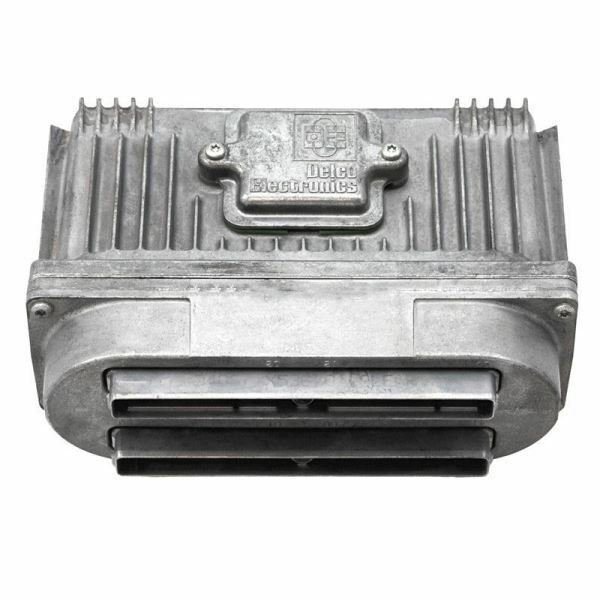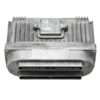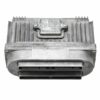Restore Peak Performance to Your 1997 GM Vehicle
Is your 1997 Pontiac Bonneville, Grand Prix, or other GM vehicle suffering from perplexing issues like a persistent check engine light, erratic shifting, or poor engine performance? The Powertrain Control Module (PCM), often called the vehicle’s brain, is the central command unit responsible for managing the engine and transmission. When it begins to fail, it can cause a cascade of frustrating and difficult-to-diagnose problems. This replacement PCM, part number 16227797, is the definitive solution to restore your vehicle’s original drivability and reliability.
From the Diagnostic Bay
We recently had a 1997 Buick Regal with the supercharged 3.8L engine come into the shop. The owner complained of a harsh 1-2 shift and an intermittent stall at idle, but there were no specific transmission codes. He had already replaced the mass airflow sensor and idle air control valve to no avail. After hooking up our diagnostic scanner, we noticed that the fuel trim data was wildly inconsistent. All sensors were reading correctly, which pointed us directly to the processor. The original PCM was failing internally, sending incorrect commands to the fuel injectors and transmission solenoids. Installing a properly programmed 1997 Bonneville PCM with the customer’s VIN resolved all the issues instantly. It’s a classic case where chasing individual sensors can be a waste of time and money when the core problem lies with the computer itself.
Is Your GM Vehicle Showing These Signs of a Failing PCM?
- ✔ Unexplained Check Engine Light (CEL) with various or no specific codes.
- ✔ Noticeable decrease in fuel economy.
- ✔ Engine stalling, stumbling, or running rough at idle.
- ✔ Harsh, delayed, or erratic automatic transmission shifting.
- ✔ Complete no-start condition where the engine cranks but won’t fire.
- ✔ Communication errors when trying to use an OBD-II scan tool.
- ✔ Inconsistent performance that seems to change with temperature.
The Critical Role of a Programmed 1997 Bonneville PCM
Unlike a simple sensor, a PCM is not a one-size-fits-all component. Each module must be precisely calibrated to your vehicle’s specific Vehicle Identification Number (VIN). This programming ensures that the computer has the correct parameters for your engine size, transmission type, emissions equipment, and any factory options like supercharging. Our process ensures a seamless installation. We take your VIN and flash this module with the latest, most stable software updates directly from General Motors. This not only matches your vehicle’s original configuration but can also resolve underlying software bugs that may have existed from the factory.
This module is a direct-fit replacement for original part numbers 16227797 and 19109047, ensuring perfect compatibility with the vehicles listed below. By providing us with your VIN during checkout, you eliminate the need for expensive trips to the dealership for programming. This unit will arrive at your door ready to be installed.
Installation and Post-Installation Notes
Physically replacing the PCM is typically straightforward, involving disconnecting the battery, unplugging the electrical connectors, and unbolting the module from its bracket. However, on many 1990s GM vehicles, a security relearn procedure (often called Passlock or VATS) may be required after installation for the vehicle to start. This procedure usually involves a series of key cycles and can be performed without special tools. In some cases, a Crankshaft Variation Relearn (CASE Relearn) may also be needed to ensure optimal engine timing and prevent misfire codes, which requires a capable bidirectional scan tool.
Why do you need my VIN?
Your Vehicle Identification Number (VIN) contains crucial information about your car’s engine, transmission, and factory options. We use the VIN to load the exact GM-specified software onto the PCM, ensuring it communicates perfectly with your vehicle’s systems right out of the box.
Is this a plug-and-play part?
Yes, because we program it to your VIN, it is designed to be plug-and-play. However, as mentioned, some GM vehicles of this era may require a simple security relearn procedure (using only your key) to allow the car to start after the new module is installed.
What is the difference between a PCM, ECM, and ECU?
The terms are often used interchangeably. ECM (Engine Control Module) typically just controls the engine. A PCM (Powertrain Control Module) is more integrated and controls both the engine and the automatic transmission. ECU (Electronic Control Unit) is a more generic term for any electronic module in a vehicle.
Will this fix my transmission shifting problems?
If your shifting problems are caused by a faulty control module sending incorrect signals to the transmission, then yes, this part is very likely to be the solution. The PCM controls shift points, line pressure, and torque converter lockup.
Where is the PCM located on my 1997 Bonneville?
On most 1997 GM H-body and W-body cars like the Bonneville, LeSabre, and Grand Prix, the PCM is located inside the vehicle’s air filter box in the engine compartment. This protects it from heat and moisture but makes it critical to ensure the airbox is sealed correctly after installation.


